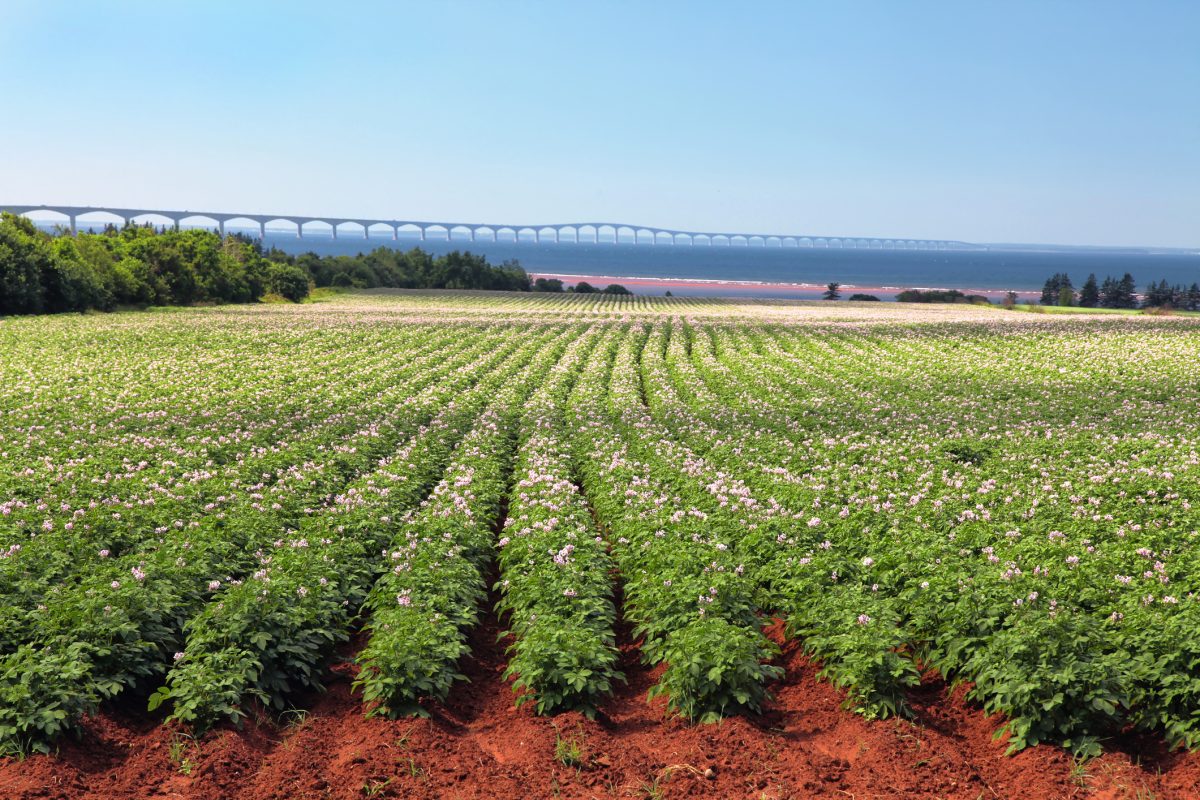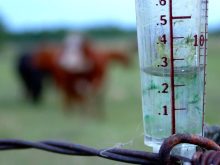Each day it gets easier to assess how much damage frost and excessive moisture did to Manitoba crops over the Victoria Day long weekend.
Farmers can expect their soybeans to emerge this week because of warm and sunny conditions — and that germination will probably suffer in some soybean fields.
“I’m expecting to see a reduction of stand coming up this week if your beans haven’t been coming up as of yet,” Dennis Lange, a farm production specialist with Manitoba Agriculture, Food and Rural Development (MAFRD) at Altona, said during MAFRD’s Westman webinar on Wednesday.
Read Also

CFIA looks for feedback on proposed seed potato rule changes
The Canadian Food Inspection Agency is looking for public and industry input on proposed amendments to regulations around seed potatoes.
“Some were planted the first week of May and have only been in the ground two weeks so I wouldn’t get too excited about them, but by the end of this week you should start to see some emergence.
“Up until now the soil temperatures have been pretty cool. This is the week to see whether you’ll have good emergence or not.”
Soybean germination suffers when plants are seeded into soils colder than +8 C. That means fields seeded earlier, when soil temperatures were warmer, might have better plant stands than those seeded just before the storm.
The ideal field will have 130,000 to 140,000 soybean plants per acre, but fields with 80,000, regardless of row spacing, still have the potential to almost achieve the optimum yield, Lange said.
Heavy rains ranging from two to four inches hit much of southern Manitoba on Sunday, followed by blizzard-like conditions with sub-zero temperatures — as low as -6 C, according to some reports.
Acclimatized
The good news is, it was cool and cloudy before the frost, so crops probably were a bit acclimatized, provincial oilseed specialist Anastasia Kubinec said. Wind and wet conditions might also have helped. Wind prevents cold air from settling and wet soils slow the rate of heat loss.
Frost can destroy canola cotyledons, but in some cases new ones will grow back if the plant’s growing point survived.
Look for regrowth when assessing canola fields hit by frost, Kubinec said. If the stem is pinched off or the plant flops over, it will likely die.
Ideally there should be seven to 10 living canola plants per square foot, but with herbicide-tolerant canolas, stands of one to two plants per square foot can still be economic, she said.
“An established canola stand with as few as one to two plants per square foot generally has higher economic potential than if growers were to reseed that crop in June,” the Canola Council of Canada said in a CropWatch article.
“This population is far below the minimum five per square foot required to meet yield potential, but a thin stand seeded early has greater economic potential, considering yield, quality and cost of production, than an adequate stand that doesn’t get established until mid- to late June.”
Surviving canola crops are also increasing vulnerable to soilborne diseases and flea beetles, as seed treatments wear off three to four weeks after seeding, Kubinec said.
Flax handles frost much the same as canola, but Kubinec said she hasn’t heard of much being out of the ground.
Sunflowers tolerate frost as they emerge — up to -4 for a short time, she said. Field peas are also fairly frost tolerant, she said.
Cereal crops can tolerate more frost than most crops, said Pam de Rocquigny, MAFRD’s cereals specialist, because their growing points are below the surface.
Recently-seeded spring wheat can survive temperatures approaching -7 C, even if sprouted, she said.
Farmers checking their seed should look for white and firm radicles (roots) and coleoptiles (shoots).
Winter wheat, from greening to tillering, can tolerate up to -11 C, with only a slight decrease in potential yield, de Rocquigny said.
Emerged corn can take a fair bit of frost too before the growing point is killed. But like soybeans, corn germination can be reduced or prevented when newly planted seed absorbs cold water.
Water tolerance
In addition to frost, many Manitoba fields are suffering from excessive moisture. Cereal crops can survive 24 to 48 hours underwater and three to seven days of excessive moisture, she said.
Oats are the most water-tolerant cereals, followed by wheat, corn and barley.
Young crops are the most susceptible to drowning because their growing point is in the ground. But smaller plants also have less demand for oxygen, de Rocquigny said.
Excessive moisture can also slow or prevent cereal seed germination because the process requires oxygen, she said.
Much of southwestern Manitoba was already wet and the storm left standing water in many fields, said Lionel Kaskiw, MAFRD’s farm production advisor in Souris.
— Allan Dawson is a reporter for the Manitoba Co-operator at Miami, Man. Follow him on Twitter at @allanreporter.















